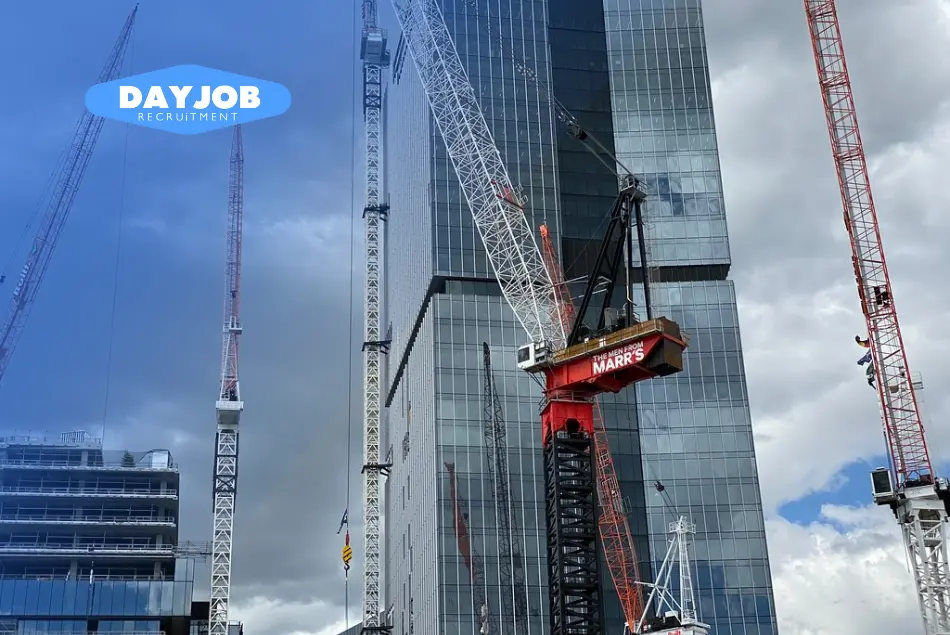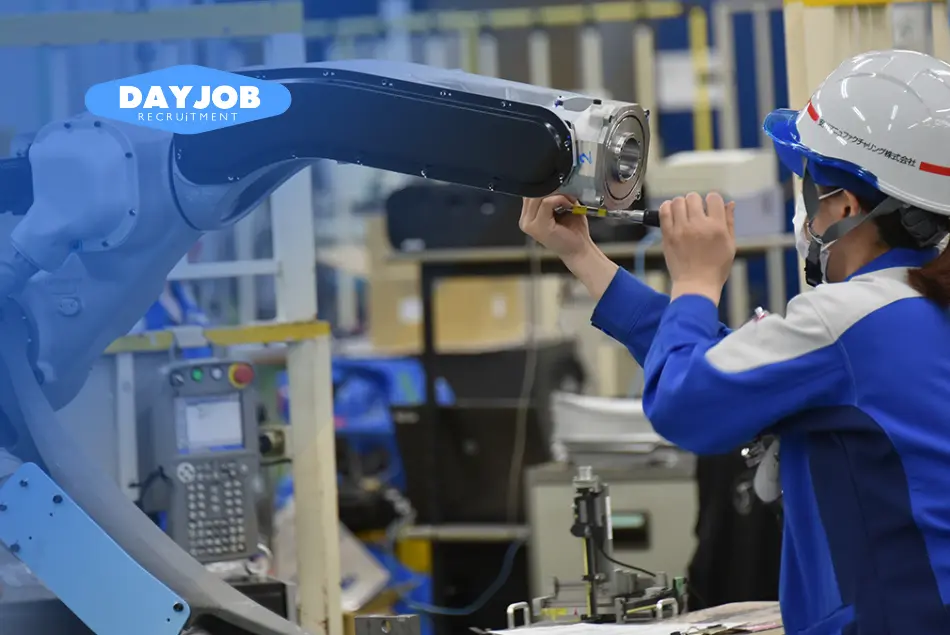Are you among the many considering relocating to Australia for a fresh start? Did the pandemic’s travel restrictions temporarily halt your plans? Or do you need to figure out your next steps because your visa is nearing its expiry? Don’t worry; we’ve gathered some tips to help alleviate your current concerns.
Key Takeaways
- Navigating Australia’s visa application process for the construction industry involves understanding intricate eligibility criteria and complying with health, character, and financial requirements.
- Skilled Work Regional (Provisional) 491 Visa offers a pathway to permanent residency for non-Australian skilled workers in designated regional areas, with changes in occupation lists and state nominations affecting eligibility.
- The Skilled Independent Visa (Subclass 189 visa) is aimed at skilled workers not sponsored by an employer or family, offering permanent residency based on a points system evaluating skills, experience, and other factors.
- Applicants must stay informed about the latest updates in immigration policies, including adjustments in occupation lists and points systems, to ensure their profession remains eligible and to maximize their chances of success.
- The introduction of the Work and Holiday visa arrangement with the Philippines highlights the evolving landscape of Australian immigration, offering new opportunities for young professionals.
Challenges for Immigrants in Australia’s Construction Industry
Australia’s construction industry is a lucrative sector, offering numerous opportunities for skilled workers from around the globe. However, for aspiring immigrants, navigating the path to employment and residency in Australia comes with its set of challenges:
Subclass 189 Visa
The skilled independent subclass 189 is a popular choice for many skilled workers. However, the application process is intricate, requiring a thorough understanding of the eligibility criteria and timely submission of necessary documents.
Skills Assessment Hurdles
Before applying for the subclass 189 Visa, immigrants must undergo a skills assessment by a relevant assessing authority. This assessment ensures that the applicant’s skills and diploma or trade qualification align with an occupation on the skilled occupation list. A positive skills assessment is crucial, but obtaining it can be challenging and time-consuming.
Point-Based System
The points score eligibility system evaluates applicants based on age, qualifications, work experience, and other factors. Achieving the required points for the skilled independent subclass 189 Visa can be competitive, especially when many skilled workers vie for limited slots.
Health and Character Requirements
All applicants must meet stringent health and character requirements to ensure they align with Australian laws and societal values. This often involves medical examinations and police checks, which can be daunting for some.
Financial Implications
Visa fees can be substantial, especially if including family members in the application. Moreover, the cost of obtaining necessary documents, certifications, and undergoing medical checks can add up.
State or Territory Government Involvement
Some visas may require nomination or sponsorship from a state or territory government, adding another layer of complexity to the immigration process.
Permanent Residency and Citizenship
While the skilled independent subclass 189 Visa is a permanent visa, the path to Australian citizenship requires additional criteria to be met, including residency duration and understanding of Australian values.
Tips for 491 and 189 Visa Holders
Australia’s visa system is intricate, and for those in the construction industry, understanding the nuances can be crucial. Here’s a breakdown of the key visa subclasses and what they mean for you:
Skilled Work Regional (Provisional) 491 Visa
- Overview: The 491 Visa facilitates non-Australian skilled workers and their families to live, work, and study in designated regional areas of Australia for up to five years. After three years of regional stay, holders may pursue permanent residency via the Subclass 191 Visa, provided they meet specific criteria including a minimum taxable income level 1
Recent Changes: Australian skilled visa programs underwent a review of their occupation lists from 1 July 2023. This review possibly affected the eligible occupations for the 491 Visa. There has been a state and territory nomination allocation update for the 491 Visa among others, during 2022-2023. However, the specific changes in point allocation, priority processing, and the provision to relocate were not detailed in the accessed sources.
Impact on Regional Development: The primary aim of the 491 Visa is to address skill shortages and promote regional development by attracting skilled individuals and families to regional areas. The mandatory regional stay is intended to distribute population growth and economic activity outside major urban centers, thus fostering regional development.
These elements align with the user-provided information concerning the visa’s regional development impact. The changes in point allocation and priority processing, if accurate, would likely further incentivize skilled migration to regional areas, although these specifics weren’t corroborated in the accessed sources.
Skilled Independent Visa (Subclass 189 Visa)
- Overview: The Skilled Independent Subclass 189 visa is designed for skilled workers who are not sponsored by an employer, a state or territory, or a family member. It operates under a points-based system, where applicants are required to score a minimum number of points to be eligible for an invitation to apply. The points are awarded based on factors such as age, English language proficiency, skilled employment history, and educational qualifications among others
It’s not explicitly mentioned in the sources if being in the construction industry enhances a candidate’s chances of qualification. However, having an occupation on the relevant skilled occupation list is crucial for eligibility.
- Benefits: It offers numerous benefits including permanent residency, the opportunity to work and live in Australia indefinitely, and access to Medicare, which is Australia’s state-run healthcare program. Additionally, it provides access to social security benefits and the freedom to purchase property in Australia. Free education is also a highlighted benefit, making it a desirable choice for skilled workers and their families.
- Eligibility Criteria: To be eligible for the Subclass 189 visa, applicants need to have a relevant occupation listed on the skilled occupation list, and obtain a positive skills assessment from a relevant assessing authority. It’s vital to meet the points score eligibility, which is generally a minimum of 65 points, although this threshold may vary. The points are awarded based on factors such as age, English language proficiency, educational qualifications, and skilled employment history among others. Additionally, applicants need to submit an Expression of Interest (EOI) and receive an invitation to apply for the visa.
Updates on Policy Changes in Australian Immigration Affecting the Construction Industry
Recent changes in Australian immigration policies have significant implications for the construction industry, which relies heavily on skilled overseas workers. Understanding these updates is crucial for anyone in the sector looking to apply for visas, particularly the Subclass 189 (Skilled Independent Visa) and Subclass 491 (Skilled Work Regional (Provisional) Visa).
- Adjustments in Occupation Lists: The Australian government periodically reviews and adjusts the skilled occupation lists that are pertinent to various visas, including the 189 and 491. These changes reflect the evolving needs of the Australian economy and labor market. It is essential for applicants to regularly check the latest occupation lists to ensure their profession is still eligible.
- Points System Modification: The points-based system, a critical aspect of the 189 visas and 491 visa applications, has undergone modifications. These changes can affect the score required for eligibility, prioritizing certain skills or attributes that align with the current labor market demands.
- Pathway to Permanent Residency: For 491 visa holders, the pathway to permanent residency has seen updates, particularly in terms of the requirements for transitioning to a Subclass 191 (Permanent Residence (Skilled Regional)) visa. This includes the duration of stay in regional areas and the economic contributions expected from visa holders.
- Processing Times and Application Procedures: Updates in processing times and application procedures are also noteworthy. Applicants should be aware of the current expected timelines for visa processing and any new requirements in the application process that could impact their plans.
Update on 417 Visa for Filipinos
Australia has introduced a new Work and Holiday visa arrangement with the Philippines. This arrangement will permit up to 200 young Filipinos and Australians annually to have a 12-month holiday in each other’s country. During this period, they can engage in short-term work and study. The exact commencement date and further details will be announced once everything is finalized. More details can be found in the Prime Minister’s announcement.
The 417 visa is for Filipinos aged 18-30 starting from 2024. The date and details will be published in due course.
491 and 189 Immigrant Visas Frequently Asked Questions:
Subclass 189 Visa
1. What exactly is 189 Visa?
Visa 189, known as the Skilled Independent visa, is tailored for skilled folks aiming to settle and work in Australia permanently without needing sponsorship from a state, employer, or family member.
2. How does the point system operate?
Points are allotted based on several factors including your age, mastery of English, professional experience, and educational qualifications. You’ll need to hit a certain point benchmark to get an invitation to apply.
3. Is there an age cutoff for 189 Visa?
Yes, typically you should be under 45 years of age when you receive the invitation.
4. Is a job offer essential for applying for 189 Visa?
Nope, a job offer isn’t a prerequisite for the application.
5. What’s the usual processing duration for this visa?
The processing durations can fluctuate. However, the Department of Home Affairs regularly shares updated processing timelines on their official website.
6. What’s the price tag on applying for 189 Visa?
The application fees are subject to alterations. It’s wise to check the latest charges on the Australian Department of Home Affairs’ website.
7. Can I include my family in the application?
Absolutely, your family members can be part of your application.
8. Are health and character evaluations required?
Yes indeed, every applicant needs to satisfy both health and character assessments.
9. Is it possible to pursue Australian citizenship with 189 visa?
Yes, upon meeting the residential prerequisites and other conditions, you can seek Australian citizenship. For thorough information, it’s recommended to check the official website or get in touch with a registered migration consultant.
10. How long does the validity of this visa last?
It’s a lifetime visa allowing you to stay in Australia indefinitely, though the travel portion is valid for 5 years from the date of issuance.
Subclass 491
1. What is the subclass 491 visa all about?
The subclass 491, or Skilled Work Regional (Provisional) visa, is crafted for skilled workers to embrace the lifestyle, education, and work opportunities in specific regional areas of Australia.
2. Who can propose a nomination or sponsorship for the 491 visa?
You’d need a nod from an Australian state or territory government agency or a sponsorship from a qualified family member living in a designated regional area.
3. How is the points test structured for the 491 visa?
Points are granted based on several facets such as age, English language skills, work experience, and educational qualifications. A nomination or sponsorship can fetch you extra points.
4. What’s the age restriction for the 491 visa?
You should be below 45 years of age at the point of receiving the invitation.
5. What’s the duration of stay permitted on a 491 visa?
This visa grants you a 5-year stay in Australia.
6. Can I get permanent residency with the 491 visa?
Absolutely! After fulfilling certain conditions like residing and working in designated regional areas for a minimum of 3 years, you can apply for the Permanent Residence (Skilled Regional) visa (subclass 191).
7. Can my family be part of my 491 visa application?
Yes, your family members can be included in your visa application.
8. Is there a dedicated list of professions for the 491 visa?
Yes, you’ll need to pick an occupation from the pertinent skilled occupation list, ensuring it’s in demand in the designated regional area.
9. Do I need a job offer for the 491 visa application?
No, a job offer isn’t mandatory. Yet, you’d need a nomination from a state or territory or a sponsorship from a qualifying family member.
10. What are the English language prerequisites for the 491 visa?
You’ll need to exhibit a competent level of English unless certain exemptions apply.
11. Is it necessary to reside in the nominating or sponsoring designated regional area?
Yes, both you and any family members on the visa are required to live and work in the specified regional areas of Australia.
Conclusion
Understanding the stakes and challenges is crucial for aspiring immigrants in the construction industry. While the path to working and living in Australia offers immense rewards, it demands meticulous planning, perseverance, and a deep understanding of the immigration process.
Ready to Elevate Your Construction Journey in Australia?
Whether you’re an employer seeking top-tier talent or a skilled blue-collar worker ready for your next opportunity, Dayjob Recruitment is your trusted partner. With our innovative approach and vast network, we ensure seamless placements tailored to your needs. Don’t let the perfect opportunity slip away. Contact us today and let’s build the future together!
Are you a job seeker looking for your next big opportunity? Click below to see how we can assist you in finding the perfect role.








